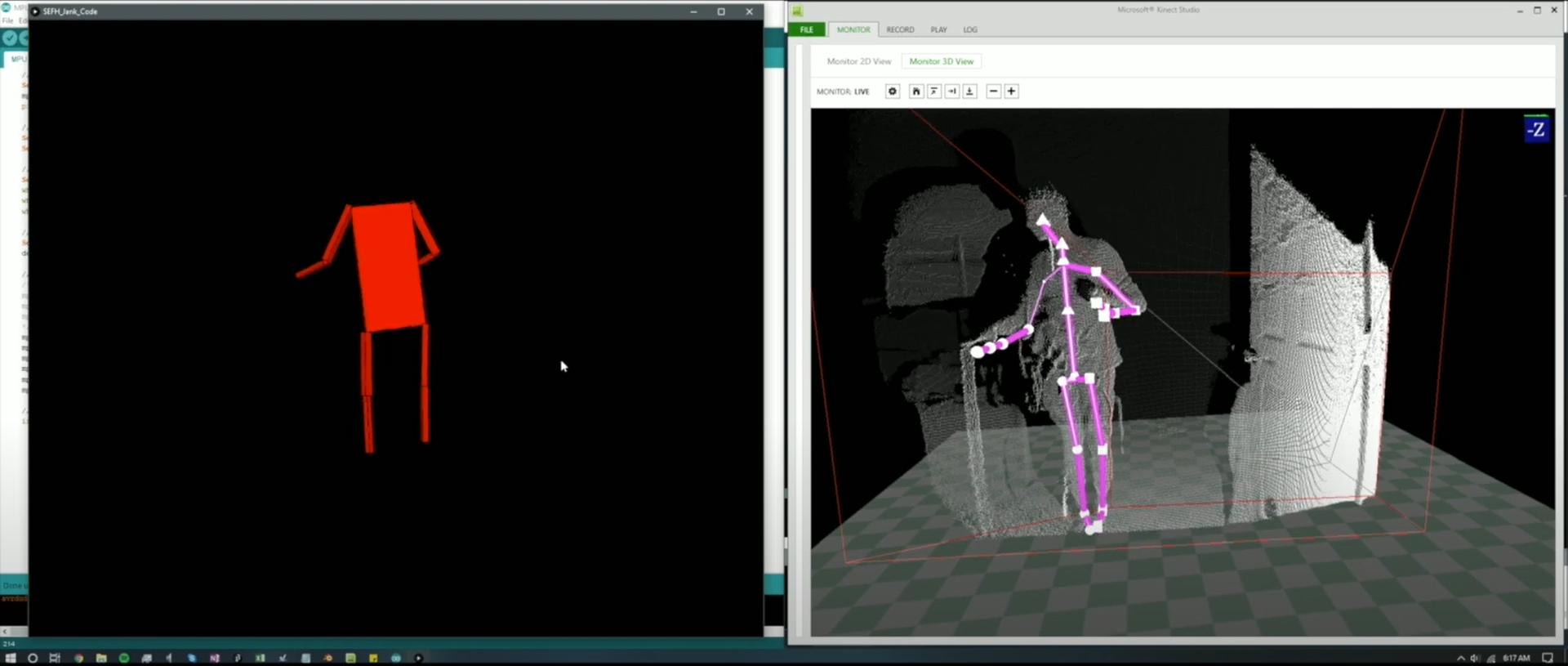MENU
Creating a System to Track Body Kinematics Without Using Cameras

One of the more impactful, substantial projects that I have been working on for a little while now is a new type of system to track body kinematics without using cameras. This system uses tiny IMUs, or inertial measurement units, placed all around your body to track the orientation of each body segment and to stitch all of that data back together into a 3D model. This data can not only be used to make a 3D model, but can also be used to track relative joint positions in 3 dimensions. With the data about joint position in 3 dimensions, eventually, this system will be able to determine accelerations and forces acting on individual joints, helping sports medicine and physical therapy greatly. The main benefit of this system however, is the fact that it is completely portable. Since there are no bulky camera setups necessary, this system has the potential to fit into a small body suit that one can wear during workouts to track their form, or wear during run sessions to track their gait in real time throughout the entire run. There are many more applications for this technology, and I have only been working on it for a little while now, but I have plans to pursue these applications in the future. Below will be videos about the progress made on this so far. The videos below were made as an aide to help our team (consisting of Shobha Dasari, Andrew Yu, and I) compete in science fair competitions, going on to win 3rd at the Texas State Engineering Fair.V1 Demo Video: YouTubeVersion one of the idea involved developing this technology from almost the ground up, trying to make sure that this was a feasible idea. This video demonstrates this proof of concept that something like this could work. The fact that this was the MVP stage is why the sensors are taped onto my body.V2 Demo Video: YouTubeVersion two of the idea involved not too much more progress was made on the idea visually from the last time. Here, however, you can see the addition of the legs into the 3D model, and a model from the Kinect is shown to the side as a comparison because a staggering number of sports therapy and physical therapy facilities use technologies close to the ones found in an Xbox Kinect sensor to diagnose their patients.One next step is to try to calibrate the system more accurately, trying to fix some of the errors in angles that can be seen in some of the arm positions in these two videos. Another goal to hit is to add many more sensors, including ones for hands, feet, neck, head, and 2 more sensors for the back (in order to sense how the back is tilted). Once this is done, we can go about trying to get this system to be more friendly towards consumer-like applications.